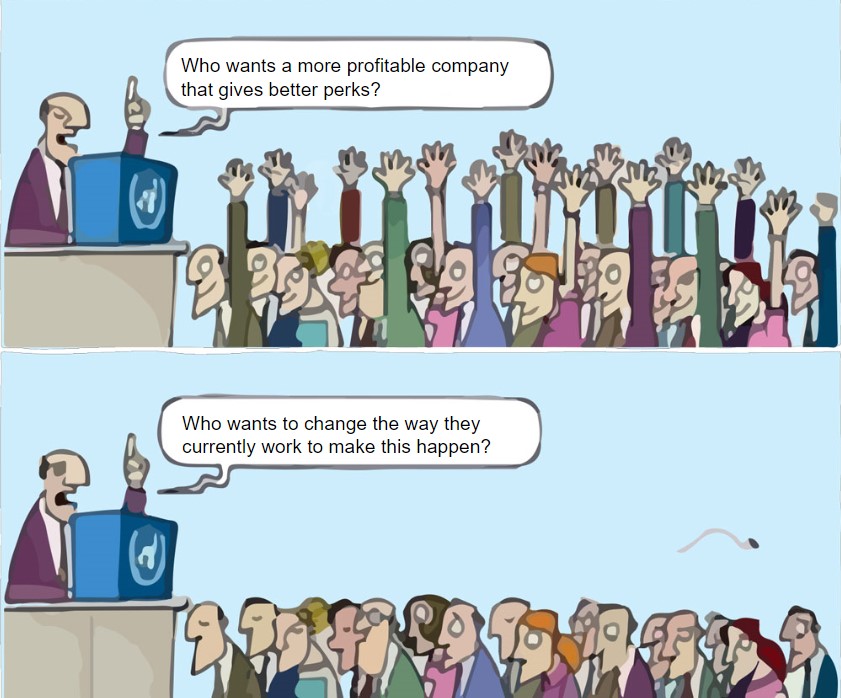Organizations are complex tapestries woven from people, processes, IT systems, cultural norms, visions, and values. While change within such a system can be essential for progress, it’s often met with resistance. The very nature of change challenges the stability and predictability many employees depend upon.
Life Priorities and Change Resistance
Most individuals prioritize their life as follows:
- Mental Health and Well-Being
- Physical Health and Fitness
- Relationships with family ,relatives and significant others
- Career and Job
- Side Hobbies and interests
It’s natural for many to occasionally prioritize their job above other aspects, especially when chasing promotions or adapting to a new role. However, such an approach isn’t sustainable long-term. Disrupting this balance—like rapid changes at work—often leads to resistance as individuals seek to maintain stability in their lives.
The Nature of Positive Change
Change, when introduced correctly, is akin to an investment: initial effort and adaptation yield long-term benefits. But if the perceived effort outweighs perceived benefits or if the change initiative is poorly executed, employees revert to older, more familiar methods.
The Dynamics of Organizational Size
Larger organizations often employ top-down change strategies. While this can lead to short-term challenges like demoralization and turnover, the vast resource pool of such entities allows for quick recovery. Conversely, smaller organizations must be more cautious. With employees often wearing multiple hats, the ripple effects of a single resignation can be significant.
For smaller entities, it’s crucial that changes address immediate business needs, given their limited resources. Employees in such settings expect quick results for their efforts.
Understanding Employee Mindsets
Before introducing any change, it’s imperative to gauge the organization’s pulse. Knowing who to approach first can create the momentum needed for widespread acceptance. Here’s a classification based on typical employee reactions:
- Futuristic Thinkers
- Description: Open to change and forward-thinking.
- Approach: Detail how the change benefits the company and them. Address potential challenges.
- Cautious Individuals
- Description: Willing to change but need thorough validation.
- Approach: Showcase support from futuristic thinkers and involve them in identifying potential bottlenecks.
- Status Quo Supporters
- Description: Resistant to any disturbance in their routine.
- Approach: Introduce change in increments. Supervisory guidance might be necessary.
- Self-Interest Advocates
- Description: Their resistance stems from personal interests at stake.
- Approach: If they wield minimal influence, consider their feedback but proceed with the change. If they’re influential, evaluate the change’s broader impact.
In Conclusion
Change is a multifaceted challenge, and its acceptance varies among individuals. Properly gauging the organization’s mindset, crafting a well-thought-out plan, and introducing it sequentially can pave the way for smoother transitions. Remember, understanding and addressing concerns is key to successful change management.
Author
Pranav Modak
